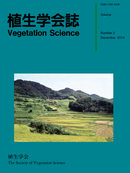Volume 22, Issue 1
Displaying 1-6 of 6 articles from this issue
- |<
- <
- 1
- >
- >|
-
Article type: Article
2005Volume 22Issue 1 Pages 1-14
Published: June 25, 2005
Released on J-STAGE: January 06, 2017
Download PDF (1569K) -
Article type: Article
2005Volume 22Issue 1 Pages 15-23
Published: June 25, 2005
Released on J-STAGE: January 06, 2017
Download PDF (1128K) -
Article type: Article
2005Volume 22Issue 1 Pages 25-40
Published: June 25, 2005
Released on J-STAGE: January 06, 2017
Download PDF (2183K) -
Article type: Article
2005Volume 22Issue 1 Pages 41-51
Published: June 25, 2005
Released on J-STAGE: January 06, 2017
Download PDF (1741K) -
Article type: Article
2005Volume 22Issue 1 Pages 53-61
Published: June 25, 2005
Released on J-STAGE: January 06, 2017
Download PDF (1332K)
-
Article type: Article
2005Volume 22Issue 1 Pages 63-68
Published: June 25, 2005
Released on J-STAGE: January 06, 2017
Download PDF (878K)
- |<
- <
- 1
- >
- >|
